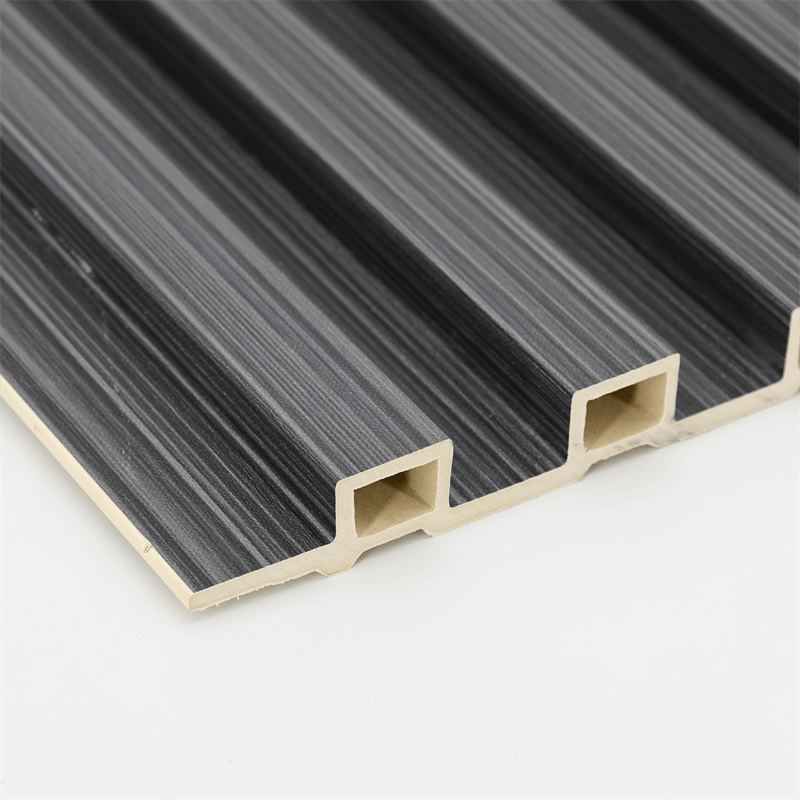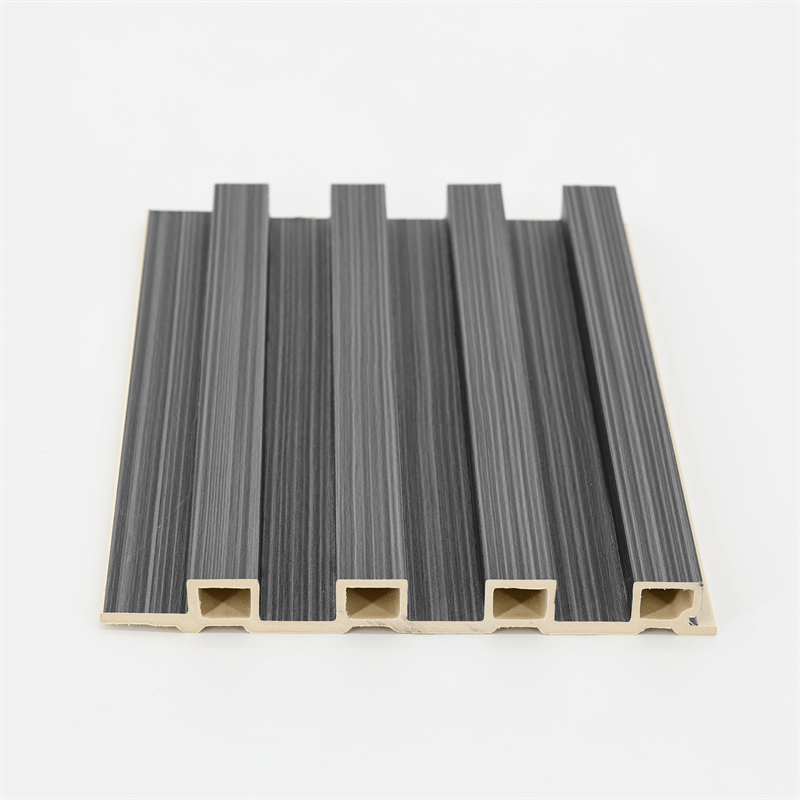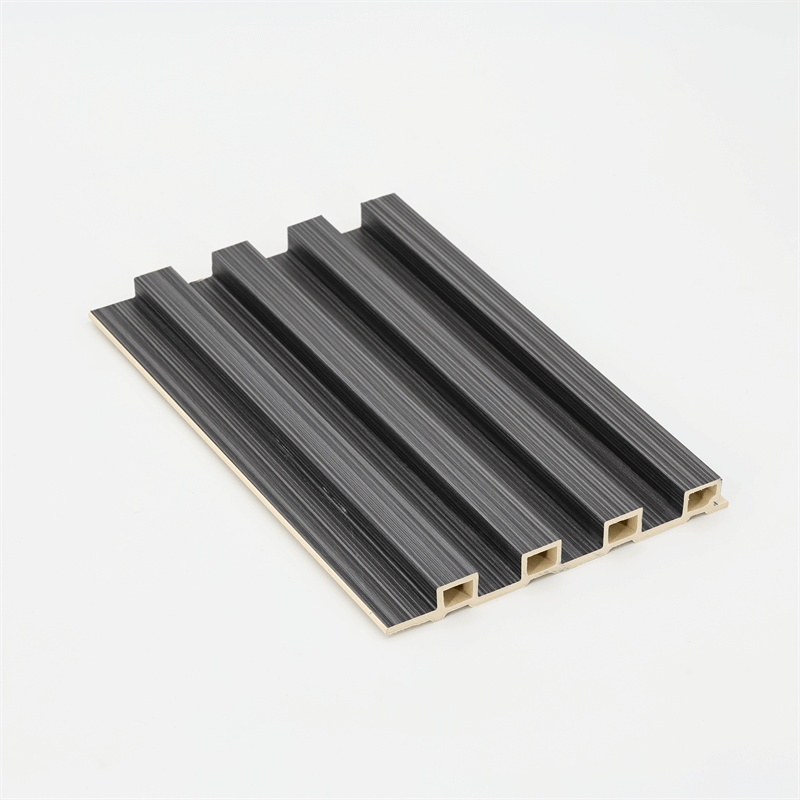The construction industry is undergoing a transformative shift towards sustainable practices and materials.
In this context, wood-plastic composite (WPC) wall panels have emerged as a sustainable trend that promises to revolutionize the way buildings are designed and constructed.
This essay explores the future of construction with WPC wall panels, focusing on four key aspects: environmental sustainability, energy efficiency, design flexibility, and durability.
I. Environmental Sustainability:
The future of construction lies in finding eco-friendly alternatives to traditional building materials, and WPC wall panels offer a sustainable solution.
These panels are made from a combination of wood fibers and recycled plastic, reducing the reliance on virgin timber and diverting plastic waste from landfills.
By utilizing renewable and recycled materials, WPC panels contribute to the preservation of natural resources and the reduction of carbon emissions.
Furthermore, the manufacturing process of WPC panels consumes less energy and emits fewer greenhouse gases compared to traditional materials.
This reduction in energy consumption and carbon footprint makes WPC wall panels an environmentally responsible choice for the construction industry.
In the future, as sustainable building practices become more prevalent, WPC wall panels are likely to gain even more traction due to their ability to meet the demand for environmentally friendly construction materials.
II. Energy Efficiency:
Energy efficiency is a key consideration in the future of construction, and WPC wall panels play a significant role in achieving this goal.
The insulation properties of WPC panels help regulate indoor temperatures, reducing the reliance on heating and cooling systems.
WPC panels provide effective thermal insulation, preventing heat transfer through walls and minimizing energy losses.
This translates into lower energy consumption, reduced carbon emissions, and increased energy efficiency in buildings.
Moreover, the lightweight nature of WPC panels simplifies transportation and installation processes, further reducing energy consumption and associated environmental impacts.
As energy efficiency becomes a more prominent concern in the construction industry, WPC wall panels offer a solution that not only enhances the sustainability of buildings but also contributes to cost savings for building owners.
III. Design Flexibility:
Design flexibility is crucial in meeting the diverse needs and preferences of clients, and WPC wall panels offer a wide range of design possibilities.
These panels are available in various colors, textures, and finishes, allowing architects and designers to create unique and visually appealing spaces.
WPC panels can mimic the appearance of traditional materials such as wood or stone, providing the aesthetic appeal without the environmental drawbacks.
They can be easily customized to suit different architectural styles, enabling creative expression and design freedom.
Additionally, WPC panels can be cut, shaped, and installed in different configurations, allowing for the creation of intricate patterns, feature walls, or innovative architectural elements.
The design flexibility offered by WPC wall panels ensures that they will continue to be a preferred choice for forward-thinking architects and designers in the future.
IV. Durability:
Durability is a key factor in the longevity and sustainability of buildings, and WPC wall panels excel in this regard.
Unlike traditional materials that may rot, warp, or degrade over time, WPC panels are highly resistant to moisture, decay, and pests.
The durability of WPC wall panels ensures their long lifespan and reduces the need for frequent replacements or repairs.
This not only saves costs but also minimizes the environmental impact associated with the production and disposal of construction materials.
In the future, as the construction industry places greater emphasis on durability and longevity, WPC wall panels will continue to gain recognition for their ability to withstand the test of time.
The future of construction lies in sustainable practices, and WPC wall panels are at the forefront of this movement.
With their environmental sustainability, energy efficiency, design flexibility, and durability, these panels offer a sustainable trend that is set to reshape the construction industry.
As the demand for eco-friendly and innovative construction materials grows, WPC wall panels will play an increasingly significant role in meeting the sustainability goals of the industry.
Architects, designers, and construction professionals will continue to embrace the benefits of WPC panels in their projects, creating buildings that are not only aesthetically pleasing but also environmentally responsible.
In the coming years, we can expect to see WPC wall panels becoming a mainstream choice for sustainable construction, contributing to a greener and more sustainable built environment.
The future of construction with WPC wall panels is a future that prioritizes sustainability, energy efficiency, and design excellence.
Furthermore, the future of construction with WPC wall panels goes beyond their individual benefits.
These panels are part of a larger movement towards sustainable and circular construction practices.
As the construction industry increasingly embraces the principles of the circular economy, WPC panels fit perfectly into this framework.
WPC wall panels can be designed and manufactured with the principles of recyclability and reusability in mind.
At the end of their lifespan, these panels can be recycled and repurposed into new products, reducing waste and minimizing the demand for new raw materials.
This closed-loop approach aligns with the circular economy concept, where resources are kept in use for as long as possible.
Additionally, the modular nature of WPC wall panels makes them ideal for future renovations and adaptations.
As buildings evolve and occupant needs change, these panels can be easily removed, reconfigured, or replaced without causing significant disruption or generating excessive waste.
This flexibility allows for efficient building modifications, reducing the environmental impact associated with construction activities.
The use of WPC wall panels in construction also contributes to improved indoor air quality.
Traditional building materials, such as certain paints or adhesives, can emit volatile organic compounds (VOCs) that negatively impact indoor air quality and human health.

In contrast, WPC panels are often manufactured with low VOC emissions, ensuring a healthier indoor environment for occupants.
As the awareness of the importance of indoor air quality grows, WPC wall panels will continue to be recognized as a sustainable choice that prioritizes the well-being of building occupants.
Moreover, the future of construction with WPC wall panels extends to diverse building typologies.
Whether it’s residential, commercial, or public buildings, these panels offer a versatile solution that can be tailored to different project requirements.
In residential settings, WPC wall panels can enhance energy efficiency and comfort, creating homes that are not only aesthetically pleasing but also environmentally responsible.
The design flexibility of WPC panels allows homeowners to personalize their living spaces while reducing their carbon footprint.
In commercial and public buildings, WPC wall panels offer design versatility, durability, and sustainability.
From office spaces to educational institutions, these panels can contribute to creating functional and visually appealing environments that support productivity, well-being, and sustainability.
In conclusion, the future of construction is intrinsically tied to sustainability, and WPC wall panels are poised to play a central role in this transformation.
Their environmental sustainability, energy efficiency, design flexibility, durability, and compatibility with circular construction practices position them as a leading choice for architects, designers, and builders.
As the construction industry embraces sustainable building practices, WPC wall panels will continue to gain traction and become a standard element in the construction of eco-friendly and innovative buildings.
The future of construction with WPC wall panels is a future that prioritizes sustainability, circularity, and the creation of healthy and inspiring built environments.
By embracing the potential of WPC panels, the construction industry can pave the way for a more sustainable and resilient future.


